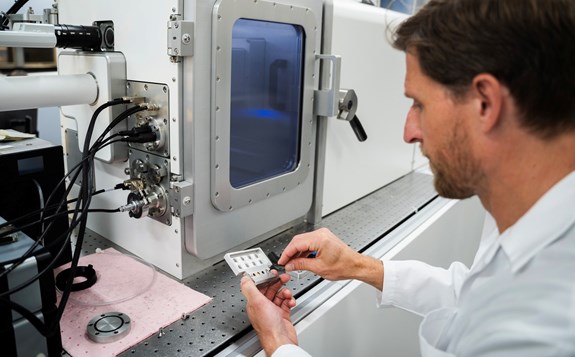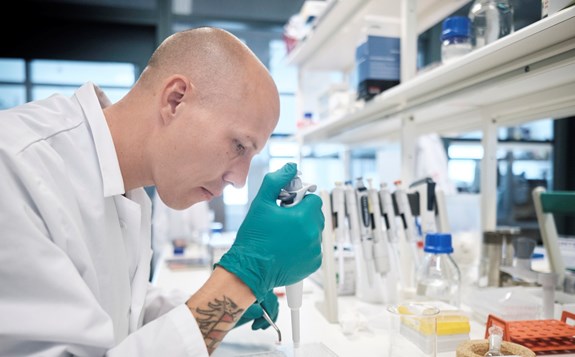New method detects novel variants of COVID-19

The method is presented in a recently published scientific article by Tiba Al-Dujaili, researcher at the Department of Biomedical Sciences at Malmö University.
Researchers at Malmö University have developed sensors that can detect different variants of the corona virus with high precision. This method means that it will be possible to keep pace with this rapidly changing viruses.
The sensors are based on parts of the human ACE2 receptor: the protein that the virus uses to enter our cells. This method is presented in a recently published scientific article by Tiba Al-Dujaili, a researcher at the Department of Biomedical Sciences at Malmö University.
You could say that the platform imitates what happens both on and inside the cell. What makes it unique is that it is reversible.
Tiba Al-Dujaili
“The COVID virus enters our lungs when we breath it in; our lung cells contain something called an ACE2 receptor, which is found almost everywhere in the body. The virus has a small protruding part that looks like a crown, and this is what attaches to the receptor so that the virus can enter – it's like the key to a lock. But by binding small pieces of the ACE2 receptor to the virus before it reaches the lungs, this crown is blocked. And that is what our method does,” says Al-Dujaili.
As part of a research team led by Professor Börje Sellergren, Al-Dujaili has developed the rSAMs (reversible Self-Assembled Monolayers) platform that has made this method possible.
"You could say that the platform imitates what happens both on and inside the cell. What makes it unique is that it is reversible. So, if the technology is used in the future, the test can be reused because our chemicals can be used over and over again.
Al-Dujaili and her research colleagues took the ACE2 receptor and cut it into short pieces where they know the virus attaches. They then tested three different parts of ACE2 and attached them either one at a time or in pairs to a gold chip on the rSAMs platform.
When the researchers measured how well these ACE2 pieces bound to different virus variants, they found, among other things, that a single piece of ACE2 could bind strongly to certain variants of the virus. And that when two ACE2 pieces were combined, they bound strongly to the SARS corona virus.
But they also found that the receptor barely reacted at all to another type of corona virus that causes the common cold.
“This shows that the receptor is very selective, that it doesn't bother to catch everything, because that would be pointless,” she says. In addition to quickly detecting future variants of COVID-19, the method will also be able to be used to find bacteria in the mouth, or to detect cancer at an early stage.
“Covid is a very smart virus that is constantly changing to adapt to new environments and circumstances. With this technology, we can constantly keep track of it and adapt to its latest moves,” says Al-Dujaili.




